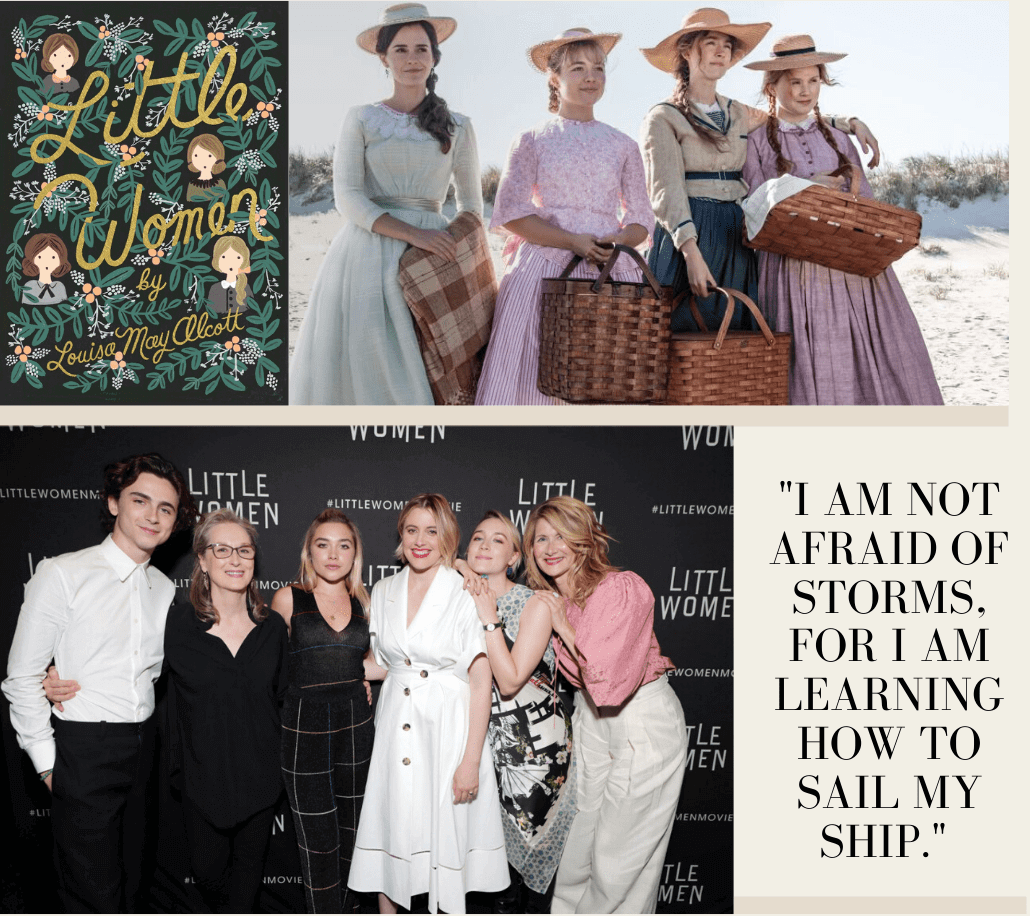by The Cowl Editor on January 16, 2020
A&E - Film & TV
by: Sara Conway ’21 A&E Co-Editor
“I like good
strong words
that mean something.”
So says the iconic, empowering, stubborn, and complicated Jo March of the novel Little Women by Louisa May Alcott. The most recent adaptation by director and writer of the screenplay Greta Gerwig—which opened on Dec. 25—however, combines the force of the “strong words” that draw Jo’s attention and the power of unspoken elements to bring new magic to the story.
As the director and writer, Gerwig strays from following the typical narrative structure of Little Women which goes in chronological order in the original classic. She decides to follow a nonlinear narrative to tell the story through the eyes of Jo March as she looks back on her childhood memories while rushing home to a deathly sick sister Beth.
Gerwig drew upon the novel and the writings of Alcott to weave together this version of Little Women where Jo March is the alter ego of Louisa May Alcott, “reflect[ing] back and forth on her fictional life.” The second eldest March girl parallels the life of her creator: the two were writers and each had three sisters. However, while Jo married in the book, Alcott remained single.
By having this doubling of childhood and adulthood narratives, all which are present in the book, Gerwig states that one can “look at how you become who you become, because I always feel like you’re walking with your younger self, and answering to her.” Jo sees her childhood through her lens of adulthood and can understand what brought her to where she is now.
Through this alternation between past and present, viewers see the strict distinction between Jo’s memories of her past and her current reality. The scenes from the March sisters’ childhood are colored with warmth and sunshine, full of love and bursting with exuberant energy.
This warmth is cut by the aesthetic of the present; the filter of cold blues and dark shadows highlight Jo’s growing feeling of emptiness in her life as her family changes. Coldness seems permanent after burying Beth, who perished from complications that arose from a childhood bout of scarlet fever. The warm glow of the sun sets behind the mourners and the trees, an indication that the March sisters’ childhood has truly reached its end.

In an interview with Vanity Fair where some members of the cast and Gerwig broke down a scene from Little Women, Saoirse Ronan, who plays the fiery Jo, points out that the four March girls have their own distinct colors. Gerwig continues the observation by adding that Meg’s color is green, Jo often wears a red cape, and Amy wears mostly blue. In addition, the costumes that Beth tends to wear throughout the film are purple. Marmee’s costumes, Gerwig notes, weaves together all of her “little women’s” colors because she is “all of them in one.” Marmee reflects a unification of her daughters as “different parts of her spirit went into each girl.”
The film’s score, composed by Alexandre Desplat, tells a story of its own while complementing the narrative of the beloved Little Women. Music, in fact, is present in most of the film. Gerwig wanted her adaptation to feel like a “musical without lyrics,” which inspired Desplat to create a score with a “modern sense of urgency” that was “dynamic and intimate.”
To bring Little Women to life through music, Desplat kept his ensemble small: he only used a 40-piece string orchestra with additions from a harp, flute, clarinet, celeste, and vibraphone. The main focus, however, was the centrality of the two pianos, and, thus, two sets hands, which reflected the four March sisters. Through this score, Desplat captured moments and answered the question, “Is [the film] a real story or is it the book [Little Women] being written?” The music responds: the audience is “reading the book with images.”
In an interview with the LA Times, Gerwig contemplates, “What you choose to tell and how you choose to tell it indicates to an audience what’s important.” Gerwig builds a story around deep, resonating emotion—viewers are right there with the characters as the Marches experience love, heartbreak, frustration, joy, and crippling sorrow. Little Women tells its timeless tale through subtle details found in the lighting, color choices, and the score of the film.